
8 minute read
on Hulu Nov
was a little bit of a learning curve. Soon, trust was developed, and we got to a place where he said he was going to pull back.” Swarr adds, “He is a flmmaker and not animator, so he has a live-action approach to animation. I had to be very specifc about what we could do and couldn’t. I had to reboard the frst eight episodes to make sure we got what he wanted. We showed him the frst episode last year, and he told us that he thought we had a very strong start.” “When he likes a script, he always says, ‘Now, we’re really cooking!’” shares Wild. The showrunner and his team tried very hard to hit the ground running from that very frst episode. “We wanted to let the fans know from the very frst lines that came out of the Warners’ mouths that this is the show that they’ve been waiting for and wanted almost 20 years after the original aired on TV in 1993. We wanted fans to know immediately that we wanted to retain the nostalgia, the meta humor and social commentary, and that we were continuing that tradition by making fun of reboots in that frst episode. That self-awareness is the trademark of the original show.” Of course, one of the big challenges of the show is to remain topical while serving up unexpected storylines, great slapstick humor and showcasing hilarious songs that stay with the audience long after they’ve seen the show. “It’s hard to believe, but we wrote the frst episode about two years before it’s airing,” says Swarr. Wild adds, “It’s really hard to be timely and topical since we send our show overseas and it takes about 12 months to make an episode. We had the same situation with Family Guy.” What Wild and his writers did was take a look at the calendar and see what was coming up in 2020-2021. They had no way of predicting the surreal turns the world took this year, but they were able to pin down election-year humor. “Some of those events, like the Olym-
pics, were derailed by the coronavirus. Occasionally, we can also sneak in something toward the end of the development process, and we can dub a line or two about four months before the show airs. So that all helps.” Both Wild and Swarr say they love the way the show continues to maintain its antiauthoritarian voice. “Smartasses are always funny,” says Swarr. “That counterculture voice always feels young and fresh. The show has Marx Brothers’ comedies in its DNA. That’s what Steven was drawn to.” The producers also believe that this 2020 version of Animaniacs is the perfect antidote to our cynical, troubled times. “There is something inherently funny about baloney in your pants or genetically altered mice taking over the world, especially during these troubled, polarizing times. What better time to deliver jabs to the establishment?” Wild says the music and its catchy songs continue to be a huge part of the equation. “There is one episode that you will see in about a month and a half, and I’m not going to spoil anything for you, but I really love one of the songs, because it has a great mix of warm comedy and a plot about an alien trying to de-
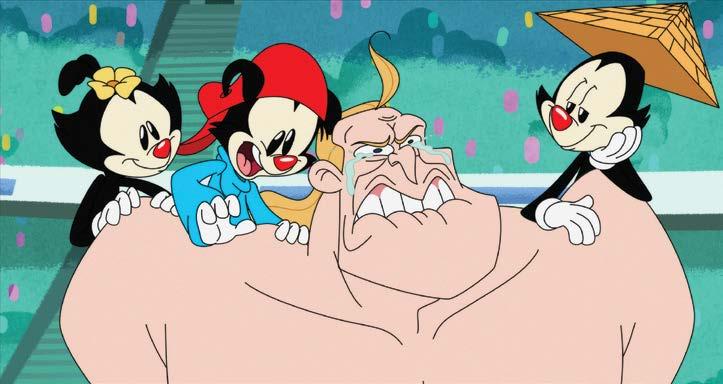
Familiar Voices: Original actors Rob Paulsen, Jess Harnell and Tress MacNeille are back to voice Yakko, Wakko and Dot Warner. stroy Earth. I just think it all worked out really well, and the voiceover work is really wonderful.”
Heirs of Looney Tunes “I like to think of Animaniacs as the heir of Looney Tunes,” adds Wild. “The slapstick, the self-aware comedy and the hand-drawn feeling are all part of the staying power of the show. Gabe and his team of animators work so hard to make it feel fresh and new, and we feel like we’re being taken back to the old days of the Warner Bros. cartoons.” “The thing that I like is the diversity of the looks,” says Swarr. “You have these segments with Pinky and the Brain or the Warners, and the animation is done so well that they really feel like real characters. You don’t see that very often in small-screen projects, because you don’t have as much time to produce the animation as you do in features.” Both the producers hope a new generation of fans will fall for the mad antics of Yakko, Wakko and Dot (and Pinky and the Brain, too). “We hope we can capture that lightning in the bottle again and recreate the feeling the original audience felt when they watched the show in the ’90s,” concludes Wild. “I hope they will have fun and be surprised,” adds Swarr. “I hope we keep them guessing and that they are always surprised but what comes next!” ◆
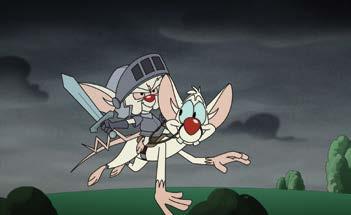
The new Animaniacs show will premiere on Hulu on November 20.
A Malaysian Story:
The Future of Southeast Asian Animation Talent
Last September, a group of Malaysian creators started readying their animation projects for submission to a national competition. Many of them will be completing a series of creative tasks to complete short animation projects for their very frst time. These programs are designed to build experience, confdence, skill and ultimately awareness of the larger animation and digital content industry. What is remarkable is that these contestants are schoolchildren, aged from 13 to 17, representing the cutting edge of future skills and talent that Malaysia seeks to build in the years and decades to come.
This cohort is the future of the Malaysian digital content ecosystem, revolving around the animation, visual effects, games and new media that the Malaysian government is keen on developing as a viable and sustainable industry. In Malaysia, agencies such as MDEC (Malaysia Digital Economy Corporation) tout the importance of skills and expertise in the digital economy, including coding, digital adoption and inclusion, software engineering and for the last decade, animation and visual effects.
While there are several programs designed to make the Malaysian animation ecosystem grow more robust, there is no substitute for having skilled talent to drive the industry. Hence the focused efforts towards nurturing, developing world class creative talent. Malaysia offers these programs to develop interest in careers, build better skills but ultimately is targeted to generate quality industry-ready talent.
MDEC employs a varied range of talent development programs to inspire and educate,
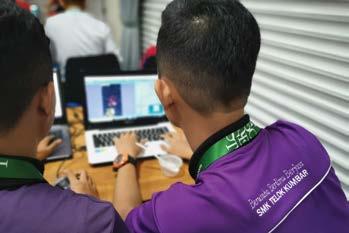
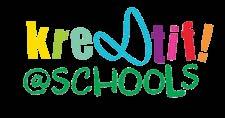
including the Enterprise Development Program (EDP) and two school-level awareness programs: Kre8tif! @ Schools that covers animation and a sister program LEVEL UP @ SCHOOLS covering game development program.
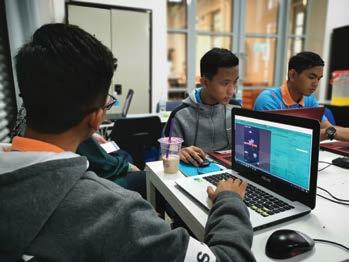
Bridging the Gap
In 2020, a new Enterprise Development Program (EDP) was launched as an upskilling bridge program designed to promote continuous learning for talent who have just recently entered the industry. Based on industry research, EDP was introduced to help individuals develop new abilities and minimize skill gaps as they transitioned into the industry. EDP consisted of a dozen upskilling programs, some with certifcation options and covered technical and business acumen skills. Courses ranged from fnance to storyboarding, 3D animation to UI and UX. The program has seen a good take-up rate, with over 300 individuals having been or still undergoing training at this time.
The EDP has been successful in several ways. First, it helps studios focus on getting new hires on board quicker by lowering the amount of in-house training required, thus shortening the process for talent to be production ready. The EDP is also a good way of community sharing since it formalizes the instruction from industry seniors who are able to share their applied knowledge and experience to a wider audience. The program also benefts cross training business skills with creative knowledge, thus widening the overall appreciation and knowledge base.
Intended to create awareness and interest, it is targeted to inspire and nurture creativity among young Malaysians aged 13-17 years. This program educates and fosters interest in animation, visual effects and game design leading towards encouraging enrolment in creative content courses at tertiary levels while also planting seeds for new IP generation.
Since 2016 over 1,500 middle and high school students from 330 schools across the nation were trained. Over 350 creative IPs consisting of original animation shorts and games were developed during lessons in game development, animations basics, storyboarding, narration, character building and delivering project work as part of a year-end national competition. Both these programs could only be developed by partners, including creative studios, education partners who assist with on-ground activation and technology enablers such as Toon Boom, Blender, Autodesk, Unreal, Unity and more. Beyond these animation and digital content related programs, MDEC continually engages with Malaysian universities, with various digital tech talent development initiatives. At time of print, a total of 60 colleges and universities across the nation have been engaged with 47% of these institutions being publicly run institutions. Aside from animation, visual effects and games under the Digital Creative Content sector, the other areas currently in high demand are in the Cybersecurity and the Data Economy.
MDEC is a government agency behind Malaysia’s digital economy development. We support the animation and visual effects industries as part of the Digital Creative Content ecosystem and continue to support aspirations in becoming the hub for regional creative content. MDEC is focused on providing the necessary ecosystem supporting the animation industry be it talent development, funding or other enterprise support programs. ◆










